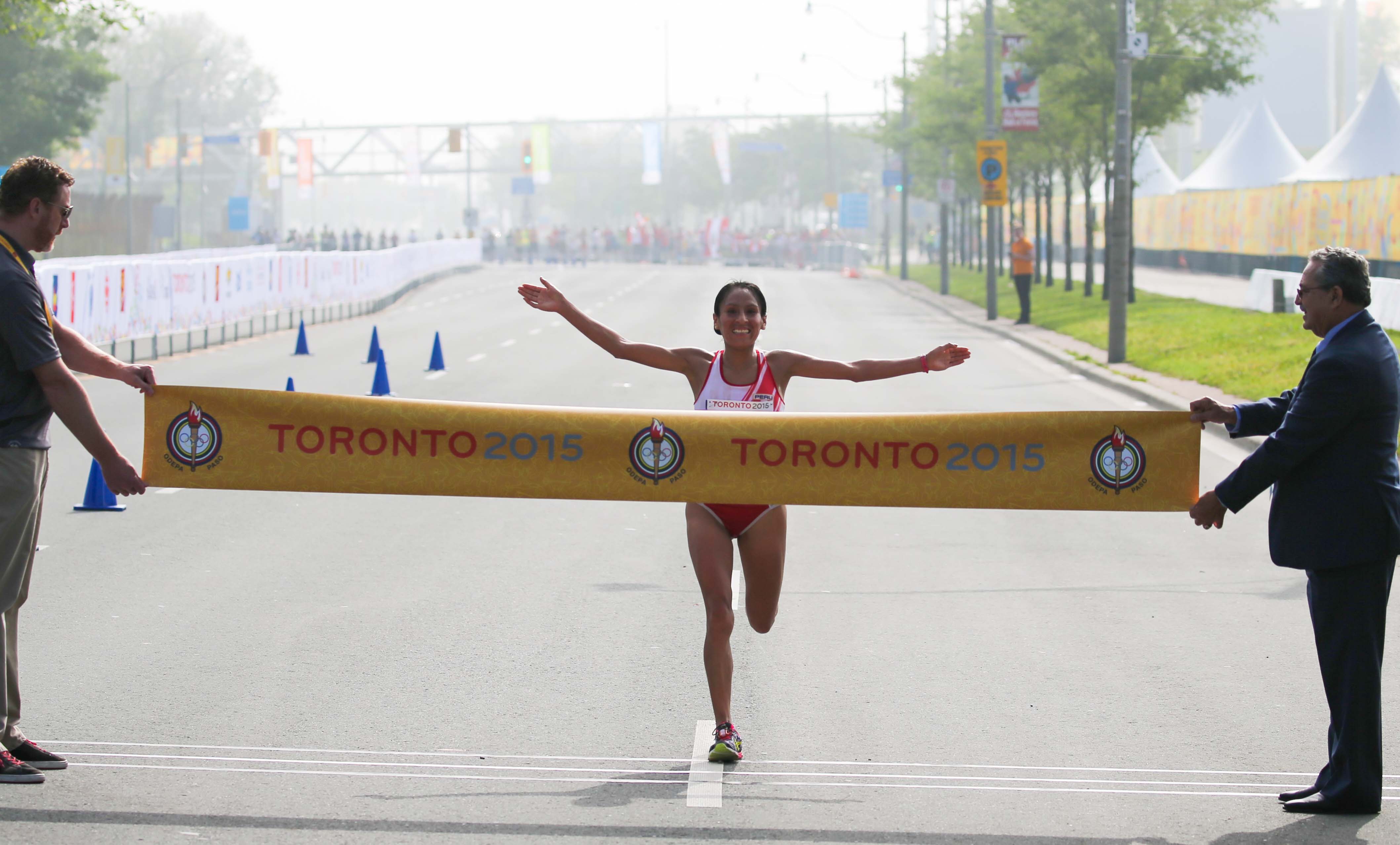Peruvian who cheated her way to Pan Am gold somehow allowed at global championships
The Peruvian athlete who was stripped of her gold medal in the marathon at the Pan Am Games was allowed to compete at the world half-marathon championships (Photo: Chris Lepik).


Peruvian marathoner Gladys Tejeda set a South American half-marathon record on Saturday just months after being stripped of the gold medal in the marathon at July’s Pan Am Games in Toronto. She was allowed to compete at the IAAF world-half marathon championships in Cardiff, Wales.
Tejeda failed a drug test during the Games and was suspended by the international governing body for athletics (IAAF).
The 30-year-old robbed Canadian Rachel Hannah a podium spot during the Pan Am Games before she was upgraded to bronze. She initially finished fourth and received the medal four months later in November in Kingston, Ont. Athletes upgraded to a podium position are robbed of the chance to stand on the podium during the event’s medal ceremony and often receive the medal months later as was the case for Hannah.
“I think the short penalty of six months for a positive drug test does send mixed messages to the athletics world on how serious or not it is to take performance-enhancing substances,” says Hannah. “With only a six-month penalty that covered most of the winter season anyways, that scenario could be strategically timed by an athlete who wished to manipulate the system. I’m thankful for Canada’s serious stance on clean sport as I know it is the right thing.”
According to Peru This Week, the Peruvian Athletics Association posted the following in February regarding Tejeda’s suspension (bolded statements by Canadian Running):
“The IAAF, in reference to the case of the athlete Gladys Tejeda, has communicated today that after ‘checking carefully the archives and the complete medical file and consultations from both our medical committee and WADA, the IAAF has decided not to appeal the decision’ of the National Commission of Justice of the FPA so the punishment of six months imposed on the aforementioned athlete expires on March 9, 2016.”
In September, the IAAF provisionally suspended Tejeda and the Peruvian Olympic Committee announced that it would “determine the penalty.”
Tejeda’s drug test was revealed in mid-September and she was cleared to compete in March (Sep. 9 to March 9). The CBC reported that the six-month suspension was backdated to July though it lasted until March.
She is expected to compete at the Olympic Games.

According to Peru This Week, Tejeda’s doping ban ended on March 9, 2016, two weeks before the global championships took place in Cardiff, Wales. According to an earlier report, she was banned for the use of furosemide, a diuretic considered to be used a masking agent, which is banned by the World Anti-Doping Agency (WADA).
Furosemide is often taken to mask the use of other drugs. It’s unclear what drugs she may have been masking with the use of the diuretic.
How is Gladys Tejeda (PER) in this race? Wasn’t she banned after positive test at Pan Am Marathon last year? #Cardiff2016
— Chris Napier (@runnerphysio) March 26, 2016
wow, doper Gladys Tejeda is back competing already at World Half (1:10:14)?? Caught for furosemide at #2015PanAmGames. #cleansport
— Camille Herron (@runcamille) March 26, 2016
The IAAF world-half marathon championships take place every two years with Canada having sent a full team of six to Saturday’s event in Wales. The Canadian women finished sixth as a team, led by Lanni Marchant, while the men were led by Olympian Reid Coolsaet.
RELATED: Pan Am marathon champ reportedly fails drug test.
Doping has been rampant in the world of international athletics recently including the rise of the drug meldonium, a substance that world 1,500m champion Abeba Aregawi was caught using. Nearly half of the 1,500m finalists from the 2012 Olympic Games, for example, have been linked to performance-enhancing substances.


